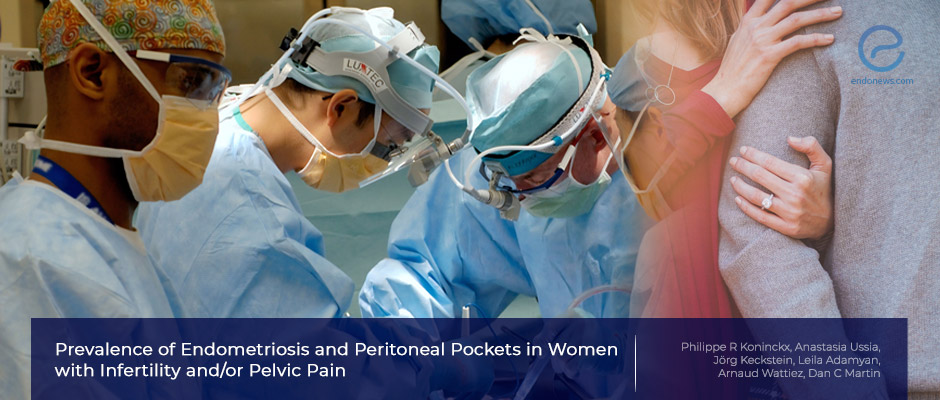Peritoneal Pockets and Endometriosis
Jul 1, 2021
A new study assessed whether peritoneal pockets are associated with pain and endometriosis.
Key Points
Highlights:
- Women with pelvic pain or infertility can be expected to have endometriosis.
- Peritoneal pockets are an independent factors predicting pelvic pain.
Importance:
-
Endometriosis is more common among infertile women who had pockets and this finding guide decision-making in women with infertility and endometriosis.
What's done here:
- Researchers analyzed prospectively registered data of 4,497 women who underwent laparoscopy for infertility or pelvic pain at KU Leuven University Hospital between 1988 and 2011.
Key results:
- The prevalence of peritoneal pockets is low (between 3.5% and 5%).
- The prevalence of pockets does not vary with age.
- The presence of pockets is associated with endometriosis.
- The prevalence of endometriosis is similar in women with pelvic pain, regardless of fertility status.
- The severity of pelvic pain is associated with pockets and the severity of subtle, typical, cystic ovarian, and deep endometriosis.
- The severity of pelvic pain is not associated with endometriosis in the pockets or the diameter or location of pockets.
Limitations:
- The data does not cover peritoneal pockets with a tiny opening to the peritoneal cavity as they were not entered into the database as a separate entity.
Lay Summary
Infertile women with peritoneal pockets had more endometriosis compared to women without pockets according to a study published in the Journal of Obstetrics and Gynaecology Canada. Severe pelvic pain was also associated with the presence of pockets and the presence of endometriosis as well as its severity.
These findings are important because they can guide decision-making about whether or not to treat peritoneal pockets in women with infertility and endometriosis.
In order to evaluate the prevalence of endometriosis and peritoneal pockets and assess whether they are associated with pain, a team of researchers led by Dr. Daniel C. Martin, Professor Emeritus at the University of Tennessee Health Science Centre in Memphis Tennessee analyzed prospectively registered data of all women who underwent laparoscopy for infertility or pelvic pain at KU Leuven University Hospital between 1988 and 2011.
A total of 4,497 women underwent laparoscopy in this period of time. Of those, 191 had peritoneal pockets. The prevalence of pockets was 4.7% in women with infertility, 4.9% in women with infertility and pelvic pain, and 3.5% in women with pelvic pain but no infertility.
Endometriosis was found in 77% of women who had pockets. Endometriosis was more common among infertile women who had pockets than those who did not have pockets.
The prevalence of endometriosis did not differ between women with pelvic pain, whether or not they were infertile.
Severe pelvic pain was associated with the presence and severity of endometriosis as well as the presence of pockets. However, the severity of pelvic pain was not associated with endometriosis in the pockets or the diameter or location of the pockets.
The researchers concluded that women with pelvic pain or infertility can be expected to have endometriosis and should be assessed for the condition. “That pockets are an independent variable predicting pelvic pain, suggests the treatment of the peritoneum of pockets,” they wrote.
Peritoneal pockets are depressions in the pelvic peritoneum. They can be in the form of small defects, defects extending to the perineal body, fluid-filled pockets with a small opening, cryptic pockets, and lateral pockets bordered by a medial ureter.
Research Source: https://pubmed.ncbi.nlm.nih.gov/33984522/
infertility peritoneal pockets pelvic pain

